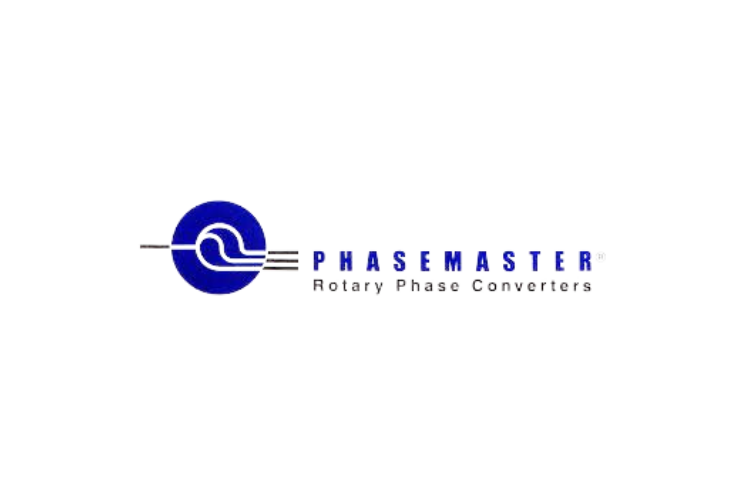Troubleshooting
In Case of Trouble
Kay Industries is committed to your total satisfaction with your Phasemaster® Rotary phase converters. Our technical support staff is ready to help you install and maintain your phase converter.
If you are having any kind of a problem, call our tech support line at 574-236-6220, or use our online technical support form. To help you save time, we have listed some common problems, diagnosis tips and corrective actions.
Converter does not start. No Sound.
Look for: Check power source with a voltmeter. L-1 to L-2 should read 230 volts (or 460 volts in a 460 volt system.
Corrective Action: Restore power. Reset main breaker and replace with correct size if too small.
Look for: Check the fuses by removing them and testing with a continuity checker or ohmmeter.
Corrective Action: Replace fuses if needed.
Look for: Check for loose terminals. Be sure lugs are not crimped on cable insulation.
Corrective Action Tighten or re-terminate as required.
Converter hums but does not start.
Look for: Be sure that no load device is starting with the Phasemaster®. The converter should be running before any load is placed on it
Corrective Action: Turn off all loads and re-start the Phasemaster.
Look for: Be sure that the incoming single-phase lines (L-1 and L-2) are properly connected to L-1 and L-2 in the converter junction box. Do not connect either incoming line to T-3 of the converter.
Corrective Action: Connect the power source to L-1 and L-2 in the converter. Connect T-3 to the load only.
Look for: Make sure the rotor moves freely by moving it with a screwdriver or other tool with power off.
Corrective Action: Loosen bolts and re-tighten to free rotor. If rotor does not turn freely after doing this, call factory.
Converter starts and breakers trip.
Look for: Check to be certain of the time-delay characteristics of the breakers. They should have similar characteristics to time delay fuses. Ordinary household type breakers are not suitable.
Corrective Action: Replace with delay type breakers or time delay fuses. Do not oversize the breakers.
Load(s) always trip overloads during or shortly after startup.
Look for: Check the line voltage (L-1 to L-2) with an analog voltmeter during start and determine the amount of line voltage drop. Check transformer capacity. If the line voltage drops more than 10% of no load line voltage, take corrective action.
Corrective Action: Increase supply line cable size and transformer size if required. Your power company can usually help with transformer problems.
A loud humming noise or chatter comes from the load starting relay.
Look for: Check voltage between L-2 and T-3. If voltage remains below 200 volts (for a 230 volt system) or 185 volts (for a 208 volt system) after the motor starts, the converter is too small for the application.
Corrective Action: Contact factory for further assistance or possible exchange.
Look for: The manufactured phase T-3 could be connected to the motor starting relay. Check to ensure correct voltage on this relay coil.
Corrective Action Rewire the control coil circuit so that T -3 does not energize the starter coil.
The voltage measured between L-2 and T-3 is ~30-40 volts higher than line voltage (L-1 to L-2) with no load applied
Look for: This is a normal condition and verifies correct operation of the Phasemaster®. When the load is applied, this voltage will be reduced as the load increases. No damage will occur to properly connected equipment.
Corrective Action This condition requires no action.
Load does not start or run properly.
Look for: Check the converter output voltages under load conditions. L1 to L2 should remain within a few volts of 230 or 460. L2 to T3 may drop momentarily below 180 (or 400) but recover to 220 (440) or above.
Corrective Action If the L2 to T3 voltage remains below 210 (420) volts, the converter may be too small for the application. Contact factory for recommendations or possible exchange.
Excessive noise or vibration.
Look for: Noise and vibration are usually the result of a resonance caused by a mounting surface that does not support the converter well. These problems also occur when the converter is bolted tightly to any surface.
Corrective Action: Be sure to remove the converter from the shipping skid and place it on a substantial floor using the shock absorbing pads supplied with the converter. Do not bolt the converter to any surface.
The three-phase currents are not equal.
Look For: If the load comes up to its rated load and none of its three legs exceeds its nameplate F.L.A. rating, there is no problem. If the L1 and L2 legs are significantly higher than the T3 leg (measured at the load input, not the converter input) then a larger converter or correction capacitors may be required.
Corrective Action: Consult with factory to review application.
